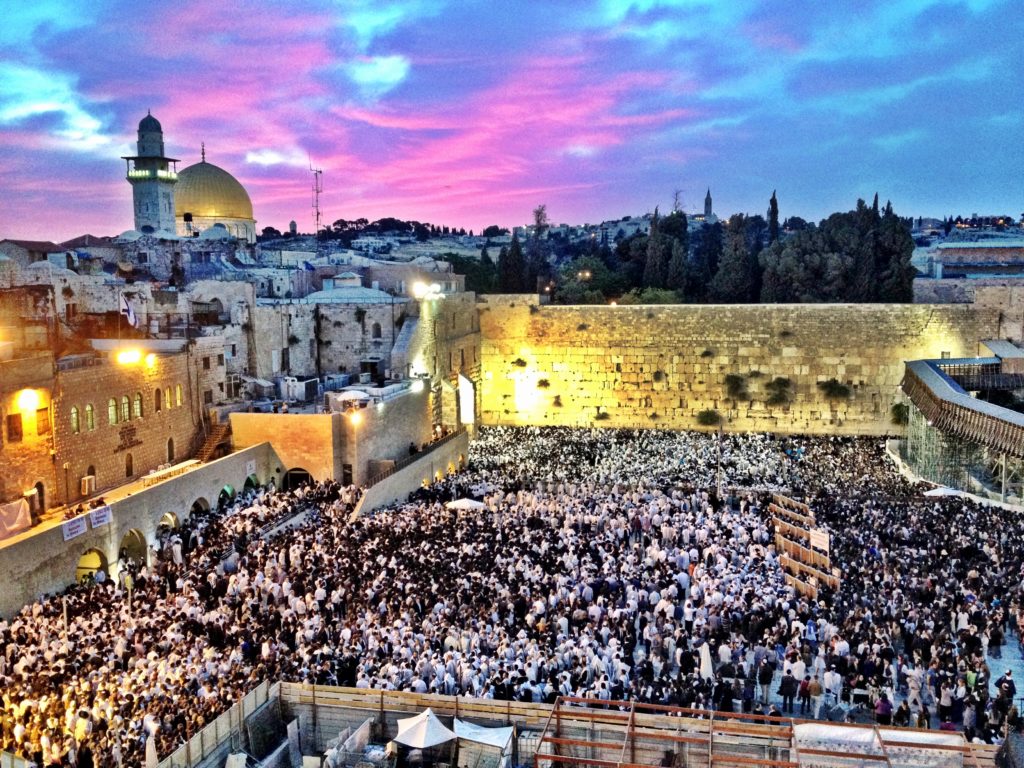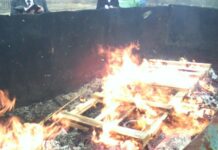
Get your cheesecake ready, Baltimore.
Nineteen local Jewish organizations are participating in a virtual Shavuot event on May 16 from 7:30 p.m. until 5 a.m. At the event, called Come and Learn 2: A Greater Baltimore Virtual Shavuot Experience, members of different congregations from across the Baltimore area will study together in late-night classes.
The event will be a “night of learning, connecting virtually and getting to explore more local teachers and topics than would likely be possible if we were able to be in person,” said Rabbi Jessy Dressin, the executive director of Repair the World Baltimore, in an email.
Repair the World Baltimore is one of the partnering organizations. The others are Beth Am Synagogue, the JCC of Greater Baltimore, Jews United for Justice, 4Front Baltimore, Baltimore Hebrew Congregation, Bet Aviv, Beth El Congregation, Beth Israel Congregation, Bolton Street Synagogue, Chizuk Amuno Congregation, Columbia Jewish Congregation, Har Sinai–Oheb Shalom Congregation, Hinenu: The Social Justice Shtiebl, Jewish Volunteer Connection, Na’aleh: The Hub for Leadership Learning, Temple Adas Shalom, Chevrei Tzedek Congregation and Temple Isaiah.
With so many different organizations participating, the event presents a unique opportunity for community connection.
“The whole idea is to expose people to teachers from different congregations and communities and to expose the teachers to learners from different communities as well,” said Rabbi Daniel Burg of Beth Am Synagogue. “My congregants get to learn with me all the time, so this is a chance for them to learn with other people, and vice versa.”
This is the second year that community organizations have partnered to put this program on. Last year, because of the pandemic, local synagogues and Jewish organizations decided to “turn lemons into lemonade” by collaborating together on the first Come and Learn experience, Burg said. As Shavuot 2021 inched closer, local Jewish organizations realized that they were not yet ready to hold the a large gatherings that would have been typical pre-pandemic.
“We thought, ‘Wouldn’t it be nice to once again come together with a real broad representation of the Baltimore Jewish community to do something collaborative around Shavuot?’” Burg said.
Come and Learn is a Tikkun Leil Shavuot program, a traditional night of studying to celebrate Shavuot, which marks the giving of the Torah to the Jewish people at Mt. Sinai.
Classes will run roughly for 45 minutes. Some of the classes throughout the night include Melody as Midrash: The Centrality of Music in the Interpretation/ Expression of Our Sacred Jewish Texts, taught by Cantor Thom King of Beth El Congregation of Baltimore; a course on the traditional Jewish folk art of paper-cutting called Papercut Judaica, taught by Rabbi Linda Joseph of Bet Aviv; and Superhero 101, a class where attendees will create their own superheroes based on lessons from Pirkei Avot, taught by Beth Israel Congregation Rabbi Ariel Platt.
Burg will teach a class called The Accidental Jew: How Ruth’s Shavuot Story Came to Shape Jewish Thinking and Identity. This session will examine the sources around Ruth and Shavuot. “She’s kind of the paradigm of the convert to Judaism, and we’ll look at that and also her connection to future redemption,” Burg said.
Dressin is offering a class on the origins of tikkun olam. “We will look at the ways the rabbis and mystics thought about this commonplace topic that we use today,” she said. “We will also consider the practical understandings of tikkun olam that can be applied to our work to build a just world today.”
Last year, organizers found there were significantly more participants in the opening hours of the event then there were in its closing hours, though dozens were still learning early in the morning. Some learned all night, while others study for a few hours, take a short nap and then begin learning again, Burg said.
“We definitely found that, as we get later into the night, having things that are a little less intellectual, a little more emotive, musical, work better when people are tired,” Burg said. “So we’re trying to pay attention to those kinds of things.”







